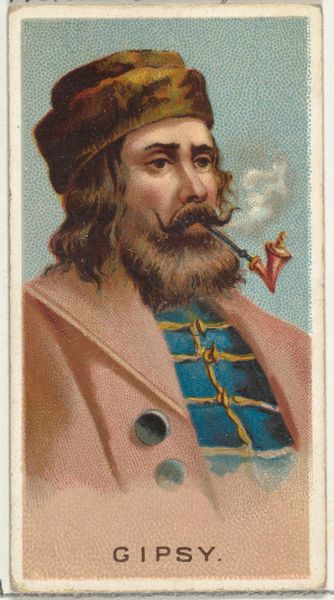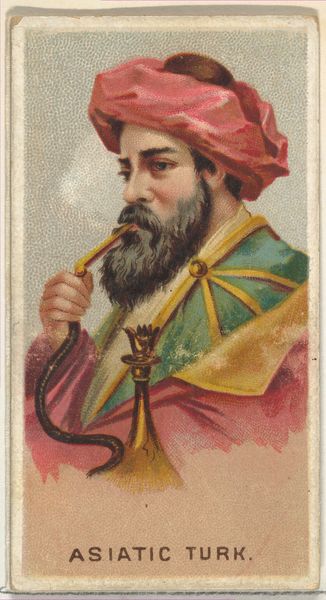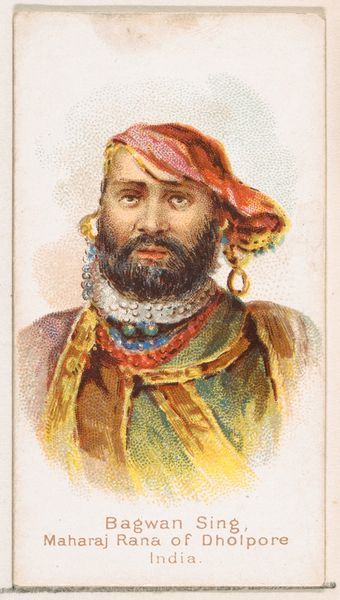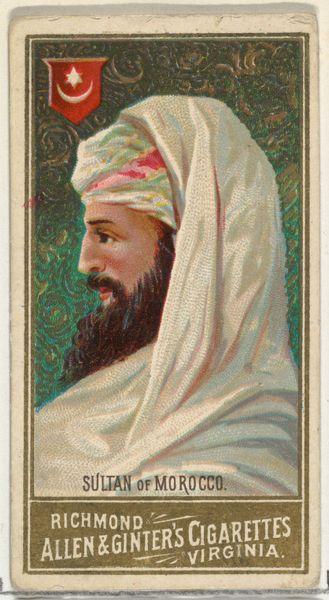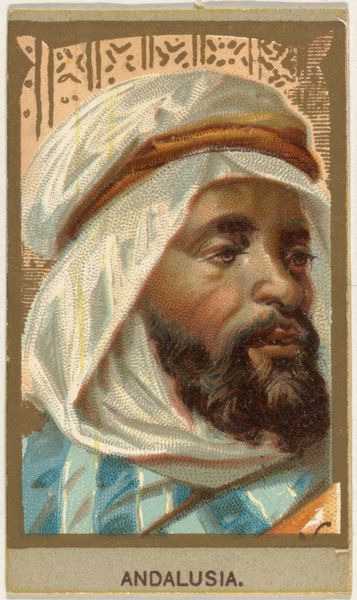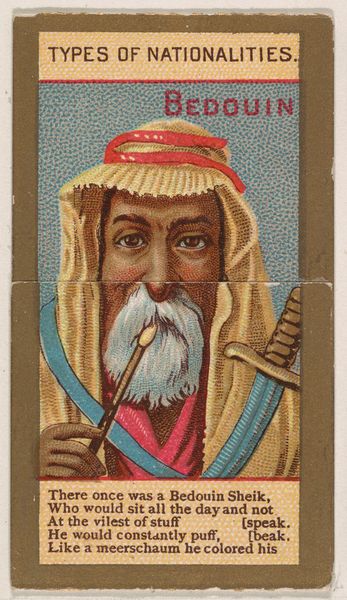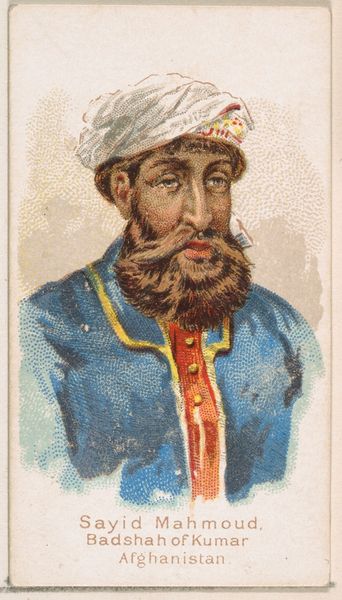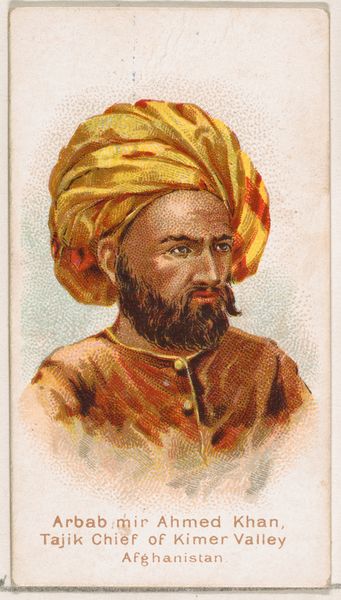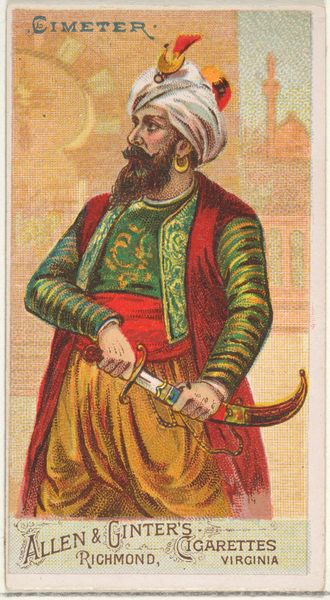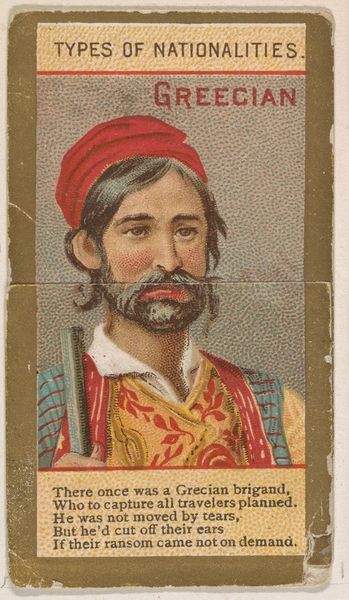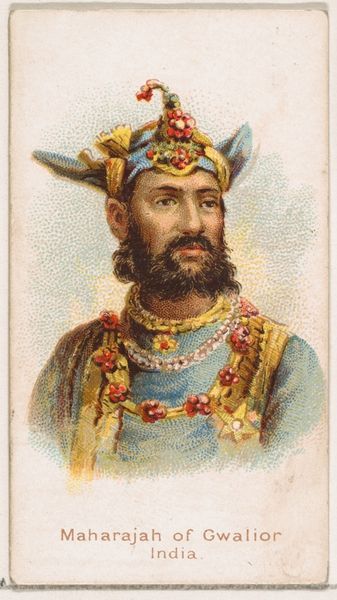
Circassia, from the Races of Mankind series (T181) issued by Abdul Cigarettes 1881
0:00
0:00
drawing, print
#
portrait
#
drawing
# print
#
men
#
portrait drawing
#
genre-painting
Dimensions: Sheet: 2 3/8 × 1 3/8 in. (6 × 3.5 cm)
Copyright: Public Domain
Curator: Here we have "Circassia" from the "Races of Mankind" series by Abdul Cigarettes, dating back to 1881. It is a print and drawing piece. Editor: My initial impression is somber. The muted tones and the subject's intense gaze create a sense of gravitas, even with the stylized backdrop. Curator: These cigarette cards served a dual purpose, didn't they? Promoting products while disseminating ideas about race and cultural identity during a period of intense colonialism. The "Races of Mankind" series specifically positions itself within pseudoscientific racial theories of the time. Editor: Exactly. This particular image evokes Orientalist tropes, especially how the man’s garb is portrayed. How might this depiction, consumed by many, have helped shape ideas about people of Circassia? The power of popular imagery in reinforcing such hierarchical structures should not be underestimated. Curator: Let’s also think about the context of display and consumption. These images were circulated within the domestic sphere through everyday consumption habits. Were people even pausing to think about who they were portraying and the message this was intended to send? What did it mean to hold this image alongside the many other “races” being presented in this series? Editor: The gaze, right? Look at his gaze. There’s defiance in those eyes. A silent scream through an imposed frame. But within the politics of visual representation, that resistance could get misconstrued as something menacing—further entrenching prevailing power dynamics of that time. It could also act to inspire curiosity on the part of the consumer as to who this man may be. Curator: Indeed, the production of these materials speaks volumes about social anxieties. This helps us understand how consumer culture historically became embroiled in reinforcing dominant ideologies and, to some extent, how it continues to shape our perceptions of self and other today. Editor: I leave this image pondering on how it functioned within that vast system of representation and its subtle influence upon its contemporary audience. Curator: Me too, and considering the political messages inherent in commercial imagery should sharpen our vision on such matters in the current moment.
Comments
No comments
Be the first to comment and join the conversation on the ultimate creative platform.

